Sel'skii listok (or Сельский листок) was a short-lived periodical published in the early 1860s. It contained short articles aimed at a peasant audience, primarily on agriculture, but from time to time focusing on other issues pertaining to peasant life. It came out twice a month, and a one year subscription cost one ruble.
Over the course of 1861, the periodical also included images that, taken together, show the yearly work cycle of a Russian peasant. Each issue had a different image at the top of its front page. They showed field labor, harvesting, and other work around the household and the village.
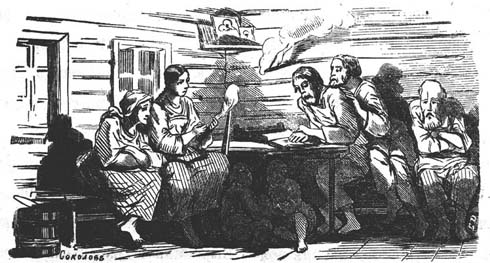 |
The first issue of the year sets the tone. In this image, peasants sit around a table as the man (neither the oldest nor the youngest, it seems) reads aloud. Note the woman working (spinning), the children playing under the table, and the icons displayed in the corner. Presumably, this image was supposed to suggest to a peasant audience one way to enjoy the journal--for everyone in the family to hear its stories.
In this issue, articles appeared on: how to fix bad meadows; growing chernushka (nigella) as food for bees; cultivating really big asparagus; excellent fertilizer for onions, and making soap for general household use. |
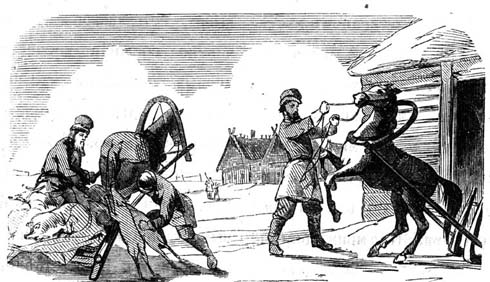 |
Issue #3 tackled another issue: bringing goods to market in the non-agricultural season (as it would then have been). Here, three men get ready to bring carcasses (apparently frozen ones) to market. |
 |
Issue #8 showed some of the first field work of the year: plowing (here with a fairly modern plow) to prepare the fields for sowing.
Note, incidentally, that the peasant seems to be taller than his horse. |
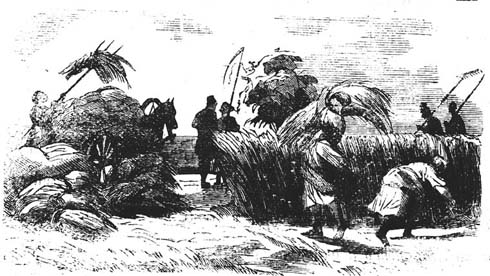 |
Issue #14 showed the peasants hard at work haying. Women's field work was particularly important at this time of year, as they gathered the hay into stacks. Later, they would play an important role in the harvest, as well. Some male peasants viewed working with sickles as women's work, and refused to take part when told to do so by their owners. |
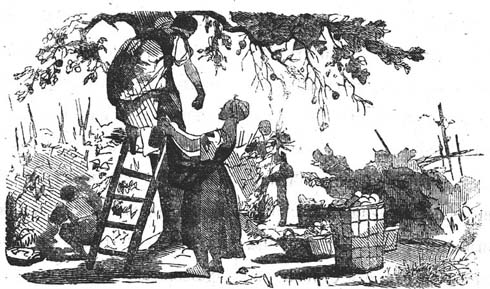 |
Already two issues later, images of the autumn harvest appeared, first with an image of gathering fruit. In some parts of Russia, apples were important crops either for domestic consumption or, perhaps even more likely, for trade. |
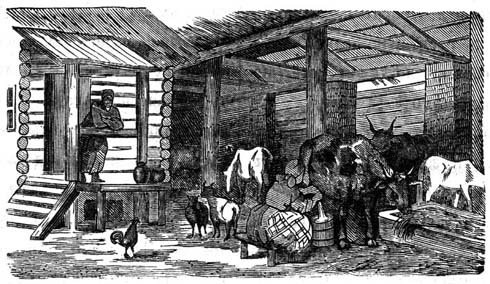 |
As the year wound down, the images began to include more scenes of general household upkeep, rather than the seasonal agricultural work that kept peasants busy during the short summer months. There were no images of the kinds of domestic production that often actually featured in peasant household economies; instead, the illustrator only considered activities tied to the household and to agriculture.
The final image of the year was this one, showing a woman milking, surrounded by animals and a man--husband?--looking on. Perhaps this was intended to remind readers of the manger.
|
|





